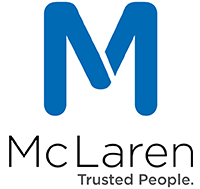Excited to bring on a new member to the team but dreading the thought of the recruitment and decision-making process? You may be spoiled for choice with job applicants or left unsure if any will be the right fit for your organisation.
We support many clients in the not for profit, government and private sectors to find their perfect match. Going through a hiring process takes time and energy for everyone involved, so it needs to be the right person for the right role, though determining who that should be is often easier said than done. Here are some tips and tricks for making smart hiring choices:
Targeted Questions at Job Interviews:
Of course this is a no brainer, that’s the whole point of a job interview after all. However just because you have the candidates in front of you answering questions doesn’t necessarily mean you’re going to come away with a clear idea of who’s most suitable for the job.
To get the best value from these meetings, use targeted interview questions that speak to the realities of the job in question. Before the interview, make sure you do a thorough read of the applicants CV and cover letter and include interview questions that will address any concerns you have around their experience or team fit.
Make it a level playing field for all candidates as much as you can by using the same process for all, including internal applicants. That way you’re judging like for like and it allows everyone to put their best foot forward – giving you a true representation of the talent on offer.
Be Clear Around What You Want:
While you’re obviously looking for the best fit for the job, jobseekers are looking for their best fit too. Make sure all relevant details about the vacancy are provided to your shortlisted candidates so that they can ensure this job is going to be right for them. This may include remuneration, benefits, location, expected hours of work, travel and the amount of flexibility required to do the job successfully. It’s also helpful to give interviewed candidates a detailed break-down of what a typical day looks like in the role, and make it clear what your own expectations, targets and KPIs look like too. You may find some candidates make the hiring decision for you once they have all the information by withdrawing themselves from the process!
While it’s understandable to want to hire for the long term, try not to get too caught up on how long you think someone’s going to stay in the job for. While you obviously don’t want to be receiving the resignation of a new hire anytime soon, the days of employees staying with the same company for a significant portion of their careers is long gone. Situations change, people grow and develop new skills and job markets are fluid. If your only concern is that this person may outgrow the role in a year or two, you could be passing up a great candidate who would add a lot of value in a shorter timeframe.
Remember that there’s no guarantee that anyone will stay in any job for any length of time, no matter what they tell you at interview.
Do Thorough Reference Checks:
Referencing a preferred candidate is essential, no matter how good a fit they may seem. If you’re torn between two good candidates or still have some doubts, the reference checking process can help provide some clarity and insight into what they are like on a day-to-day basis, which helps a lot with hiring decisions. Check out our guide to essential reference questions to make sure you’re getting the most out of this process.
One thing that’s good to keep in mind if you’re considering doing references on multiple candidates for a single job, is that the referees provided are busy people giving up their time to speak with you. Chances are you’re not the only employer contacting them for a reference too, so we don’t recommend doing verbal references on anyone unless you’re genuinely considering appointing them. If you’re simply doing it to tick a box without any intention of hiring, that may impede that candidate’s chances of using that referee for other roles going forward. So always reference wisely!
If you have a candidate that’s unwilling to provide referee details for a particular role that is relevant to the one you’re hiring for, it’s really important to understand their reasoning why – there may be a perfectly reasonable explanation, but it can also be a sign of having something to hide. Don’t be deterred by the classic “I don’t have their contact details” or “they don’t work there anymore” excuses; in the age of LinkedIn, Facebook and the internet in general, tracking down a referee even if they have moved on to another job or location is relatively straightforward.
While some candidates may want to provide written references, we suggest insisting on having a verbal conversation with the referee wherever possible. You’ll gain a lot more insight this way rather than going off words on a piece of paper that let’s be honest, could’ve been written by anyone!
Psychometric and Skills Testing:
If you’re in the enviable position of having multiple candidates that interview well and bring the right experience, another way to help determine suitability is by introducing testing to the recruitment process. These can be both soft and hard skill tests, either around specific applications or programmes that will be essential in the job, or psychometric/personality profiles to help judge overall team fit.
While testing can help build a more complete picture of a candidate’s competencies or personality traits, it’s not recommended to use background tests as the sole deciding factor because the tests themselves can be subjective. Especially in the case of online or psychometric testing where you have to rely on the candidate providing honest answers. Applicant testing should be a tool that contributes to the overall decision-making process, helping to differentiate between your top candidates.
Informal Meetings and Coffee Catch-Ups:
Job interviews tend to be very structured and formal processes where it can be hard to get a true sense of someone’s personality, particularly if they are feeling nervous. Inviting preferred candidates to an informal coffee/meeting either with yourself or other members of your team can provide valuable insight into how this person interacts in a more casual setting.
Consulting with your wider team and involving them in the hiring process can help determine which candidate is going to be the right fit. Our recommendation is that you go through formal interviews first, and then get the wider team involved to help provide input on final hiring decisions if you feel that’s appropriate.
Recognise your own bias:
Taking your own bias into account is always important when it comes to making smart hiring decisions. Are you feeling more inclined towards one candidate over the others but it’s nothing to do with their skills or experience? Before jumping straight to the offer stage, take a step back and consider your own biases and whether they could be clouding your judgement. It’s no secret that humans are naturally drawn to others like themselves. But finding another “you” doesn’t always make for the best hiring decision. Having diversity in backgrounds, experience and style can make for better teams and outcomes, so try to avoid falling into the familiarity trap when you are deciding between candidates.
We have a favourite saying here: “If in doubt, do nowt” – meaning if you get to the end of the recruitment process and you’re still not quite sure you’ve found the right person, trust your gut! The last thing you want to do is make a hiring decision that you’re not completely comfortable with. Reality is, you are feeling uncertain for a reason, and if those concerns are not alleviated by any of the above methods, then it’s probably best to not go ahead with a job offer at this stage.
You never know, perhaps your perfect candidate is out there, they just didn’t see your vacancy the first time around!
We provide a lot of recruitment and HR consulting to our clients, so if you are needing help or guidance with hiring decisions, we are always here to help!
Good luck,
Kirsty and Nikki


Leave a Reply